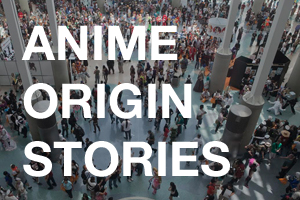When I first started my career as a journalist, the reader comment I most dreaded seeing was “this isn’t news.” It made me feel like I was wasting time and not providing any value with my work.
I didn’t think about this fear of mine while I was being paid hourly. But now, at Forbes, I get paid based on how many hits my articles get.
That means to make enough to live on, I need to be constantly publishing. To adapt, I’ve developed a scattershot approach to blogging, where I vary the amount of effort I put into each post to keep my output high. That means that for every multi-source feature on waifus, there’s a less intensive opinion piece on something like, say, Wonder Woman’s shoes.
At first, I felt guilty about these shorter pieces. When I started at Forbes in June, I planned to make every single article a feature with a week of reporting behind it. Even if a story seemed accurate and informative with just one interview, I thought it would serve my audience even better if it had two more interviews and an extra 1,000 words.
Luckily my brilliant editor, Helen Popkin, stressed early how important quick pieces are with what she calls the “ConAir Method.” It goes like this:
In order to get the studio backing to make Grosse Pointe Blank, John Cusack agreed to be in ConAir, a lowbrow movie he really wasn’t interested in. But since ConAir was a box office hit, Cusack was able to jump right from that to his passion project.
I didn’t understand how this made sense, until I discovered just how often readers are clicking on the low effort pieces. Readers want to be educated, but they also want to be entertained.
That’s the dirty secret of journalism: there is zero correlation between how much effort you put into an article and how much traffic it gets. Just look at Buzzfeed’s lists for proof. Or this little story about Ghostbusters and Internet Rule 63, which took me 20 minutes to write—but got thousands of hits.
Obviously, I am not in favor of “clickbait,” which misleads or flat out misinforms your audience. I’m just saying that some blog posts, like opinion pieces, profiles, and photo galleries, can be interesting and informative without being taking a lot of your time and effort.
I realized I’ve been snubbing things as “not news” before even giving my readers the chance. I’ve been letting my perfectionist tendencies take over. Now, I let the audience decide.
Your audience isn’t waiting around for your masterpiece. They don’t care how long it took to write. They just want to see what you have to offer them today. Let them decide if it’s news.
Discover more from Otaku Journalist
Subscribe to get the latest posts sent to your email.




5 Comments.
I personally always enjoy and look forward to the link round ups each Friday. There are always a minimum of two links on the list that I find interesting or informative or entertaining.
Thank you for sharing your insights from working at Forbes now. Very informative.
[…] organization that Photoshopped pictures of female videogame characters. It’s definitely one of my ConAir stories, as Helen would say. I wrote it on a Thursday and didn’t think about it until Saturday, when lots […]
[…] Forbes editor, Helen Popkin, she of the ConAir method of reporting for clicks, has a theory for niche journalism, too. Not surprisingly, it has a name […]
[…] editors, Helen Popkin, and write about my favorite topics. I am paid in clicks, which leads to some ConAir stories which do extremely well but don’t necessary “feed my soul,” if we want to get weird about it. […]
[…] to outsiders. As much as I realize that my core audience may find this term a bit inaccurate, I do get paid by the hit and truth be told, the stories with “Japanese cartoons” in the title get LOADS more hits. So […]